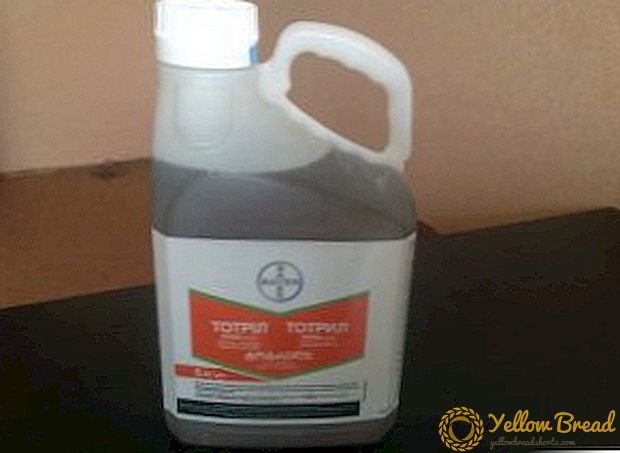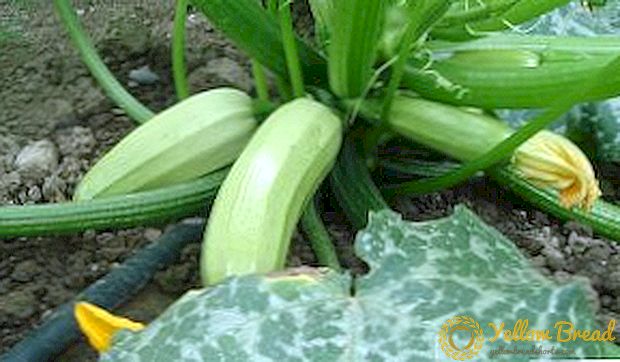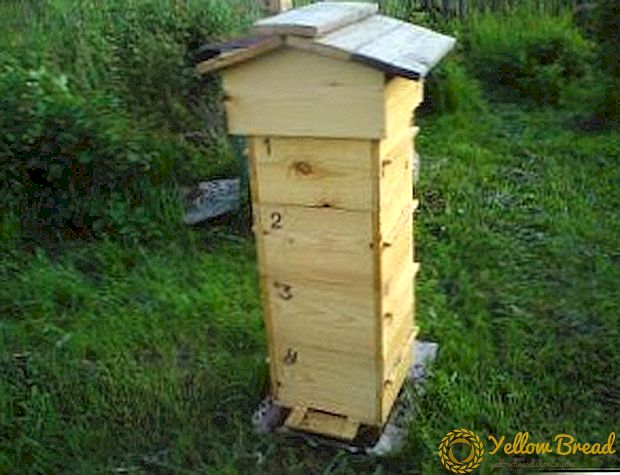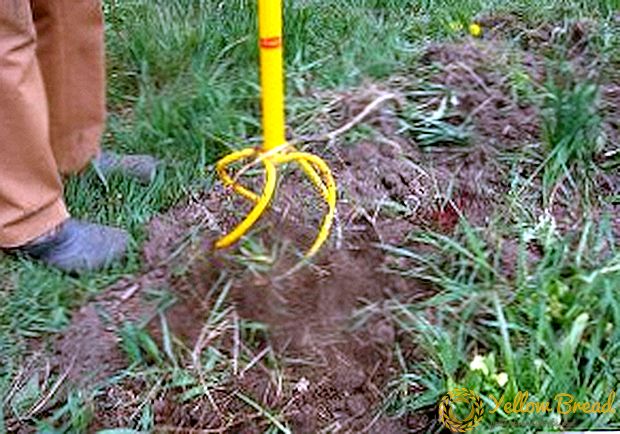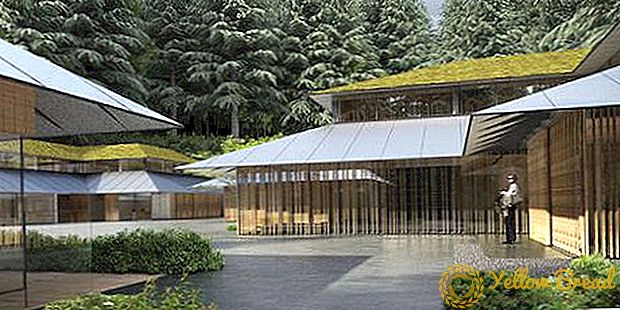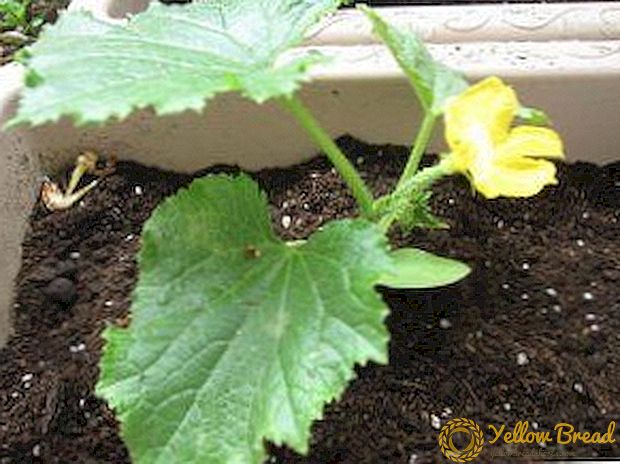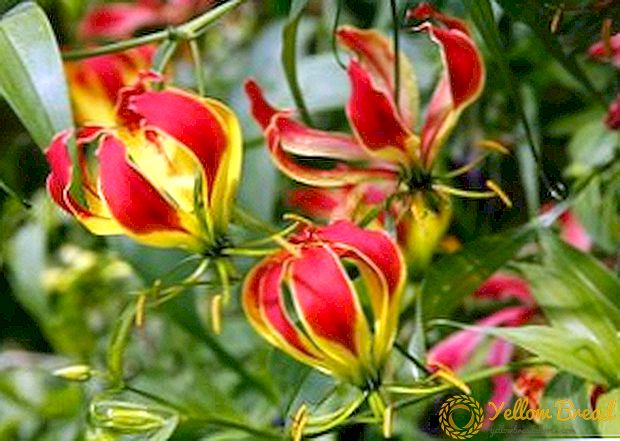 Gloriosa - decorative exotic flower extraordinary beauty. Its popular name is fiery lily - arose due to the change of yellow color during the flowering period of rich red. In adulthood, the flower resembles a small light in the wind.
Gloriosa - decorative exotic flower extraordinary beauty. Its popular name is fiery lily - arose due to the change of yellow color during the flowering period of rich red. In adulthood, the flower resembles a small light in the wind.
- Description of the plant with a photo
- Kinds
- Cultivation and care
- Lighting and temperature
- Watering
- Top dressing
- Garter
- Transfer
- Reproduction tubers
- Growing from seed
- Virulence
- Diseases and pests
Description of the plant with a photo
Gloriosa (lat. Gloriosa) - tropical representative families of Colchicaceae (lat. Colchicaceae). Her natural place of residence is the southern part of Africa and Asia. This is a perennial plant with climbing shoots and lanceolate leaves. Its maximum height is 5 meters. 
Flowers are on long peduncles. The root system is a tuber.
Gloriosa blooms all summer, some varieties - even in spring. Dying buds are replaced by new ones. On the stalk are located from 4 to 7 buds.
Petals have a wavy (curly) shape and smoothly change their color during the flowering period. Stamens become straight over time.Especially for home cultivation, there are dwarf varieties, whose height is only 30-40 cm.

Kinds
Gloriosa has several varieties. The most popular of them are:
- luxurious;
- Rothschild;
- Citrine;
- Carson;
- yellow;
- simple.

Gloriosa Rothschild common in African rainforest. Its main difference is an extensive system of climbing shoots. Leaf length is 8 cm. Single flowers are located in the axils of leaves on 10-cm pedicels. Petals have a bright red color. The flowering period lasts all summer. 
Citrine different dark red pattern at the base of yellow flowers. 
Gloriosa Carson has the appearance of a two-meter evergreen vine. The stem is subtle and knotty. Leaves have tendrils on the end. The flowers are dark purple with a yellowish tinge and curved petals. 
Gloriosa yellow differs from previous varieties branching creeping stem. Flowers of a soft yellow color have curved petals. 
Gloriosa is simple widespread in tropical African forests. The plant grows up to one and a half meters. 8-cm leaves have a pointed to the end of the form. The petals are characterized by smoothness and yellow-green color with a reddish pattern. The flowering period lasts all summer. 
Cultivation and care
Caring for gloriosa at home and growing it is not as difficult as it seems at first glance. First of all, remember that this tropical flower Moisture for him - the most necessary thing. Therefore, the soil should be constantly and moderately moist. Regular spraying of leaves and stems will not be superfluous. The soil is better to choose a nutritious and loose, slightly acidic, with good moisture and breathability.
Lighting and temperature
The plant needs sunlight, but in the hot period of the year, direct rays should not affect gloriosa.When growing indoors, it is better to place the flower from the east or west side (due to the dining shadow).

Spring and autumn - the best time for a flower because of the temperature level (about 20-25⁰С). In winter, the plant is at rest: the top dries and dies. During this period, it is necessary to dig up the tubers and sprinkle them with sand.
Wintering takes place at a temperature of about 10–12 ° C, after which the plant is transplanted into a new soil.
Watering
During summer flowering, watering should be sufficiently abundant. It is better to use rain or soft water, which was settled for 12 hours. Watering is carried out by moistening the top layer of soil, which managed to dry 1 cm. 
Creepers require so that the soil is constantly moistened, otherwise they perish. Nevertheless, the volume of watering in the fall must be reduced, and in winter completely stop.
Top dressing
Feed gloriosa during the flowering period of 3-4 times a month. Fertilizers are ideal for this purpose for flowering houseplants, which are publicly available in flower shops.

Garter
Creepers grow very quickly and require reinforcement and garters, as the stalks are fragile and the flowers grow at the very top. There are antennae on the stalks, but they are unable to wind the armature without assistance.
The support should consist of separate vertical sticks, to which the stalks of the gloriosa are tied with a rope. The armature may have the appearance of a grid, but for this you will need bamboo reeds. In addition, it is better not to place the support directly in the pot with a flower, as it is very sensitive to various damage to the roots.
Transfer
Tuber transplant preparation better to start in February. A pot with a diameter of 30-35 cm should have a flat shape and be wide enough. The ideal depth is 20-25 cm. The tuber should be placed vertically on the soil surface. Above it is necessary to pour another 3-cm layer of substrate. Do not forget about the first drainage layer. 
The soil must be light and nutritious. The weakly acidic soil is mixed with one part of the turf soil (leafy ground, river sand), two parts of humus and half - peat soil.
Reproduction tubers
Tuberous reproduction of gloriosa should be carried out in early spring. For this you need a pot about 15 cm high. At a depth of 3 cm, place the tuber with the seedling upwards. The temperature should be maintained at 20-25 ° C. Watering should begin immediately after fixing the first movements in growth. In addition, you need to organize for vines special support and tie the plant to it. After some time, the flower will need to transplant into a larger pot.
Growing from seed
The process of growing gloriosa from seeds at home is longer than the previous one. To obtain a seed, the plant requires artificial pollination. A soft brush is great for moving pollen from flowers to the stigma, which are located near. 
Once the seeds have ripened, it is necessary to transplant them into a mixture of soil with turf soil, peat and sand (1: 1: 1: 1). In order for them to germinate, the temperature should be maintained at a level of 21-25 ° C, and the soil should be moderately moist. Grown up seedlings undergo a thinning procedure, after which they are transplanted into separate pots. The flowering period is expected only after 3 years.
Virulence
Gloriosa has poisonous properties therefore, you should not eat it. As soon as it enters the digestive system, its harmful effects on the body begin. The plant should be removed away from animals and children, to exclude cases of poisoning. In addition, wash hands thoroughly after direct contact with the plant. 
Diseases and pests
The most dangerous pests are scale and aphids. Konfidor and Aktara preparations are used in the fight against them. They are used for treatment by spraying the plants.
Gloriosa, like many tropical flowers, is famous for its beauty and bright color.To admire its flowering, it does not take much effort. The implementation of the recommendations on the cultivation and care will ensure a long life of the plant, even within the apartment. But do not forget that gloriosa is not only a beautiful exotic flower, but also poisonous plant causing poisoning when ingested by the gastrointestinal tract.

